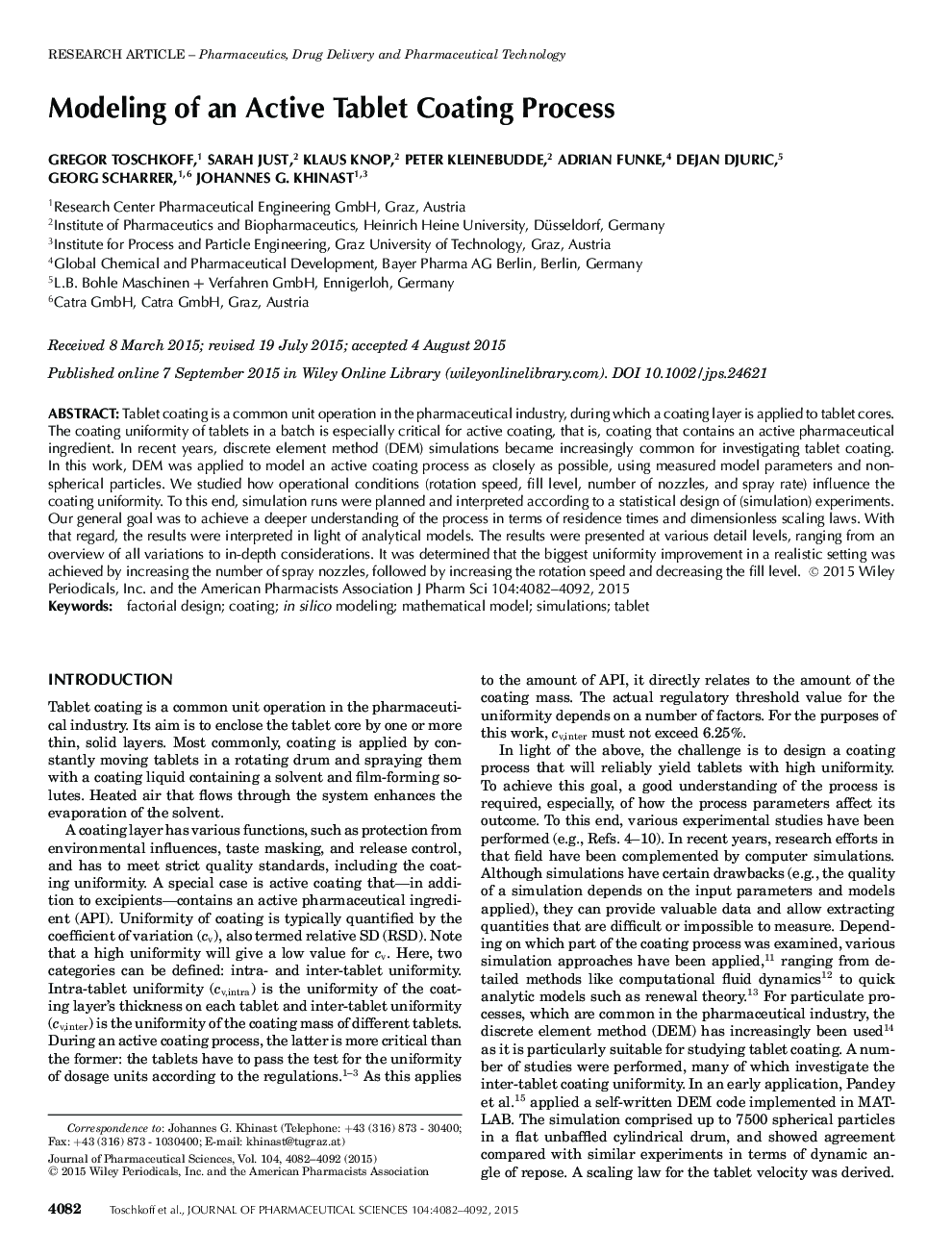| Article ID | Journal | Published Year | Pages | File Type |
|---|---|---|---|---|
| 10161933 | Journal of Pharmaceutical Sciences | 2015 | 11 Pages |
Abstract
Tablet coating is a common unit operation in the pharmaceutical industry, during which a coating layer is applied to tablet cores. The coating uniformity of tablets in a batch is especially critical for active coating, that is, coating that contains an active pharmaceutical ingredient. In recent years, discrete element method (DEM) simulations became increasingly common for investigating tablet coating. In this work, DEM was applied to model an active coating process as closely as possible, using measured model parameters and nonspherical particles. We studied how operational conditions (rotation speed, fill level, number of nozzles, and spray rate) influence the coating uniformity. To this end, simulation runs were planned and interpreted according to a statistical design of (simulation) experiments. Our general goal was to achieve a deeper understanding of the process in terms of residence times and dimensionless scaling laws. With that regard, the results were interpreted in light of analytical models. The results were presented at various detail levels, ranging from an overview of all variations to in-depth considerations. It was determined that the biggest uniformity improvement in a realistic setting was achieved by increasing the number of spray nozzles, followed by increasing the rotation speed and decreasing the fill level.
Related Topics
Health Sciences
Pharmacology, Toxicology and Pharmaceutical Science
Drug Discovery
Authors
Gregor Toschkoff, Sarah Just, Klaus Knop, Peter Kleinebudde, Adrian Funke, Dejan Djuric, Georg Scharrer, Johannes G. Khinast,
